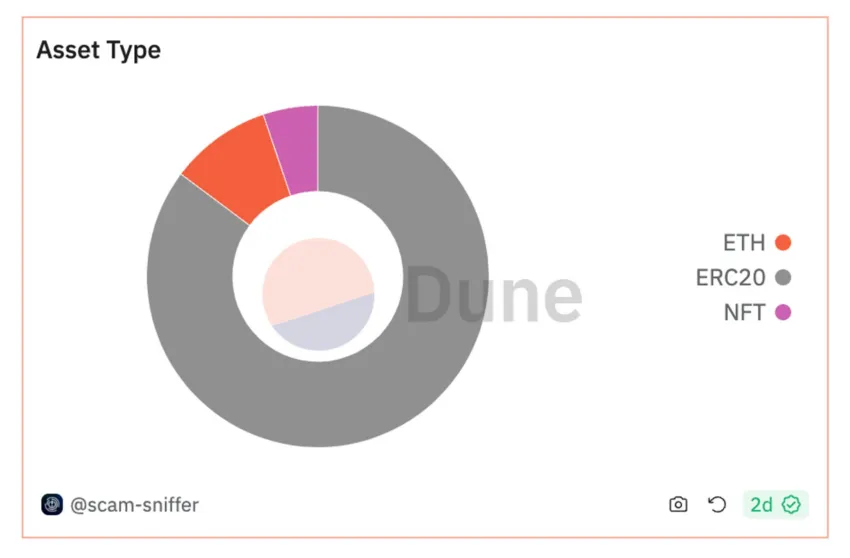Scam Sniffer reports that there was an alarming spike in personal cryptocurrency scams in February, with approximately 57,000 people falling prey to them and resulting in an overall loss of approximately $47 million.
During the period studied, a large number of individuals, primarily Ethereum mainnet users, fell prey to multiple phishing attacks.
$47 million in cryptocurrencies stolen in February
According to Scam Sniffer's findings, a total of 57,066 victims were caught up in crypto phishing scams during the month. The attacker was able to siphon his $46.86 million from these crypto investors while posing as a legitimate organization on various social media platforms, including X (formerly Twitter).
Notably, the total number of victims who lost more than $1 million decreased by 75% compared to January. However, on February 15th, he suffered a phishing scam worth $6.2 million, his biggest single-day loss.

Across the chain, Ethereum mainnet users bore the brunt, accounting for 78% of all exploits for the entire month. According to the attack breakdown, Ethereum-based theft amounted to $36.2 million from 25,029 victims.
Read more: 15 Most Common Crypto Scams to Watch Out for
Arbitrum and BNB followed, with total losses of about $3.5 million and $2.5 million, respectively. Additionally, Ethereum-based ERC20 tokens accounted for approximately $40 million in stolen assets, or 86% of the total.
It is worth noting that $4.4 million worth of ETH and approximately $2.4 million worth of non-fungible tokens (NFTs) were also stolen.

Despite the strengthening of security measures, phishing attacks show no signs of slowing down, and although the amount stolen has decreased slightly, the number of victims has increased by more than 10,000 compared to the previous month, an alarming situation. .
To execute these schemes, attackers employed various tactics including phishing signatures such as Permit, IncreaseAllowance, and Uniswap Permit2. On top of that, attackers tend to impersonate verified cryptographic entities, especially X, in social media comment sections.
Read more: Crypto social media scams: How to stay safe
Through this method, scammers lure unsuspecting crypto users to phishing websites, where their wallets are systematically compromised.
Disclaimer
All the information contained on our website is published in good faith and for general information purpose only. Any action you take upon the information you find on our website, is strictly at your own risk.


